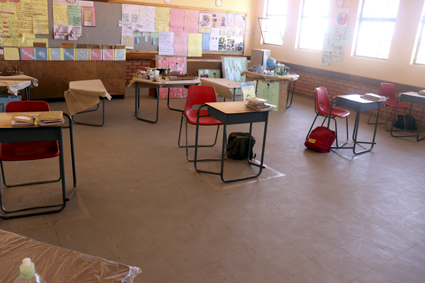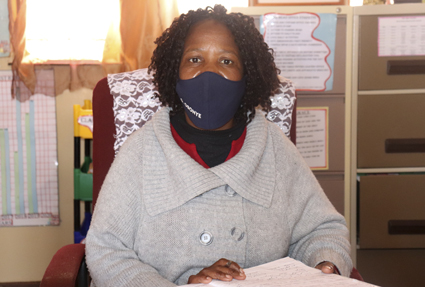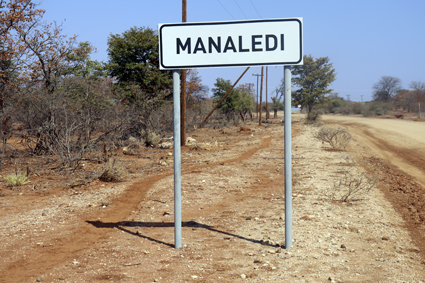Social distancing made easy in Manaledi primary
05 Oct 2020
As is often the case with outbreaks of different kinds, the advent of COVID-19 pandemic at close of last year has seen life taking a form that no one had anticipated.
In addition to the trail of destruction often left behind, outbreaks more often also introduce new words and phrases or at times, give new meanings and usages to words used on an everyday-basis.
In the case of COVID-19, several buzz words and phrases have come into being and any mention of social distancing, sanitiser or face mask would need no explaining as to what the subject of discussion could be.
When Botswana emerged from a nation-wide lockdown in June, government’s decision to open up the economy meant that strict adherence to laid down protocols intended to help thwart the spread of the virus had to take centre stage.
In the bid to comply with the set-out protocols, institutions and businesses across the different sectors of the economy had to, among others, put in place some social distancing markers within premises to ensure that customers kept the recommended distances between them.
In most public schools, the call to social distance proved to be challenging as some had to split classes to de-congest classrooms; a scenario that in some cases worsened the already existing problem of dire shortage of classrooms.
However, in Manaledi, a tiny village in the Tswapong region, this plight of scores of schools across the width and breadth of the country was not a concern.
Manaledi Primary School, described as a group three category three school in the Ministry of Basic Education’s categorisation of primary schools, happened to have been practicing social distancing way before the phrase came into constant use.
The school, which enrolls up to 150 pupils, has, since it opened its doors to its first batch of pupils in 1997, not been able to reach full capacity in terms of enrollment.
According to the school head Ms Kebarileng Obonye, enrolment at Manaledi Primary School had over the years grown steadily, albeit at a rather sluggish pace, noting that there was hope that the school would someday, reach its full potential in enrolment.
“In 2016, we had 48 pupils, 62 in 2017, 65 in 2018 and in 2019, we had 73,” Ms Obonye stated, showing the slow but steady growth of Manaledi Primary School’s population over the past five years.
With a total of 82 pupils this year, the Standard 7 class had four pupils, all girls while Standard 4, the most populated in the entire school had 16 pupils.
“Our numbers are quite favourable. Social distancing has never been a problem because none of our classes is full,” noted Ms Obonye.
Information from the school head showed that at the beginning of the year, the Standard 7 class had only three pupils; a status quo that did not last long as one of the pupils transferred out to another school shortly afterwards, leaving behind only two learners in the class.
In the course of a few months, another pupil joined the class, raising its number to the initial three, and some months later, yet another learner transferred in, bringing the number of the school’s Primary School Leaving Examinations (PSLE) candidates for this year to four.
Ms Obonye attributed the school’s small population to the small size of Manaledi, a village whose population, according to the 2011 population census, stood at 237.
Public relations officer in the Ministry of Basic Education for the Central District, Ms Marang Gobopang indicated that primary schools were divided into three categories depending on the number of pupils they enroll.
A Group 1 school enrolls 801 to 1 200 pupils and is divided into two sub-groupings while at Group 2, schools have the capacity to cater for between 451 and 800 learners, and similarly the group also has two categories within it.
At Group 3, Category 4 enrolls not more than 100 learners and often includes satellite schools.
On the one hand, Category 3, to which Manaledi Primary School belongs, has an enrollment ceiling of 150 pupils, whereas Categories 2 and 1 enroll not more than 250 and 450 pupils, respectively.
“There are many such schools, and because of the limited numbers of learners they enroll, Group 3 schools often have very high pass rates,” explained Ms Gobopang.
She said Manaledi Primary School, which itself has successively attained a 100 per cent pass rate in 2018 and 2019, now anticipates repeating the feat with this year’s Standard 7 leavers. ENDS
Source : BOPA
Author : Keonee Kealeboga
Location : MANALEDI
Event : interview
Date : 05 Oct 2020








